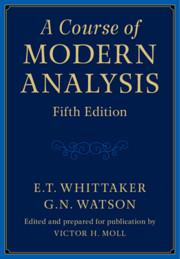An Introduction to Nonlinear Analysis
The techniques that can be used to solve non-linear problems are far different than those that are used to solve linear problems. Many courses in analysis and applied mathematics attack linear cases simply because they are easier to solve and do not require a large theoretical background in order to approach them. Professor Schechter's 2005 book is devoted to non-linear methods using the least background material possible and the simplest linear techniques. An understanding of the tools for solving non-linear problems is developed whilst demonstrating their application to problems in one dimension and then leading to higher dimensions. The reader is guided using simple exposition and proof, assuming a minimal set of pre-requisites. For completion, a set of appendices covering essential basics in functional analysis and metric spaces is included, making this ideal as an accompanying text on an upper-undergraduate or graduate course, or even for self-study.
- Simple exposition and easy proofs make this ideal as an accompanying text or for self study
- Provides the reader with an understanding on non-linear tools whilst deriving all proofs from first principles
- Background material is collected in four appendices
Reviews & endorsements
Review of the hardback: '… presents an introduction to critical point theory addressed to students with a modest background in Lebesgue integration and linear functional analysis. Many important methods from nonlinear analysis are introduced in a problem oriented way … well written … should be present in the library of any researcher interested in Lévy processes and Lie groups.' Zentralblatt MATH
Product details
No date availablePaperback
9780521605137
382 pages
229 × 152 × 22 mm
0.56kg
Table of Contents
- 1. Extrema
- 2. Critical points
- 3. Boundary value problems
- 4. Saddle points
- 5. Calculus of variations
- 6. Degree theory
- 7. Conditional extrema
- 8. Minimax methods
- 9. Jumping nonlinearities
- 10. Higher dimensions.











